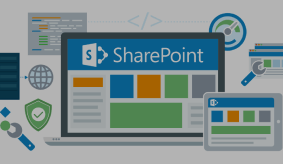Unveiling The Foundation: 4 Key Components Of A Successful IoT Strategy
 By Anita Srinivasan
By Anita Srinivasan
 27th November, 2023
27th November, 2023
IoT and artificial intelligence
IoT implementation
IoT technology trends
Cloud computing for IoT
In the evolving world of technology, the Internet of Things (IoT) emerges as a transformative force, promising a connected landscape where devices seamlessly communicate and collaborate to enhance efficiency and convenience.
According to a Garner study, “The IT Services for IoT market will represent a 58-billion-dollar opportunity in 2025, up at a 34% CAGR from 2020.”
However, the success of an IoT implementation heavily depends on a well-crafted strategy that addresses the complexities and challenges within this interconnected world.
For an in-depth understanding of our IoT practices, strategies, and approaches, please refer to this exclusive whitepaper resource.
In this blog post, we will discuss four key components that form the foundation of a successful IoT strategy.
- Technology Infrastructure
Choosing an appropriate IoT platform is crucial to building a robust technology infrastructure. IoT platforms help manage IoT devices and data collection tasks and improve communication. Before selecting an IOT platform, factors like scalability, compatibility with existing systems, support for numerous IoT protocols, and ease of integration should be considered.
- IoT Application Development
IoT app development seamlessly integrates physical devices into cohesive digital ecosystems, promoting intuitive and responsive user experiences.
These applications leverage the power of interconnected devices to gather and analyze data, enabling personalized interactions based on individual preferences.
The cross-device connectivity facilitated by IoT apps ensures accessibility from various platforms, granting users unprecedented control over their IoT-enabled environments. Real-time communication features provide instant feedback and notifications, promoting engagement and empowerment.
Moreover, the robust integration of security measures ensures data privacy and shields against cyber threats, establishing trust in the reliability of these interconnected systems.
- Data Analytics and Insights:
The real value of IoT lies in the data it generates. A successful IoT strategy includes a robust data analytics component that transforms raw data into actionable insights. Utilizing machine learning algorithms can help analyze patterns, predict outcomes, and derive valuable information from the extensive data generated by connected devices.
These insights can inform strategic decision-making, enable predictive maintenance, and uncover opportunities for innovation. Implementing analytics at the edge, where data is processed closer to the source, can reduce latency, and enhance real-time decision-making capabilities.
Take a look at our exclusive case study where we developed a robust IoT fleet management system for intelligent insights and streamlined process automation.
The amalgamation of Artificial Intelligence (AI) and the Internet of Things (IoT) has unlocked numerous possibilities across various industries. AI with IoT represents a powerful collaboration wherein AI technologies enhance the capabilities of IoT systems, creating intelligent and more responsive environments.
AI brings intelligence and decision-making capabilities to IoT devices, enabling them to analyze vast amounts of data in real-time. This constructive collaboration allows for more context-aware responses, transforming raw data into actionable insights.
Whether it is predictive healthcare monitoring, autonomous vehicles, or precision agriculture, the fusion of AI and IoT is at the forefront of driving innovation and shaping a connected, intelligent future.
- Robust Security Measures:
Security is a crucial concern in the IoT landscape, given the extensive volume of data exchanged between devices. A successful IoT strategy must prioritize robust security measures at every stage of the implementation process. This includes secure device onboarding, data encryption, and continuous monitoring for potential vulnerabilities.
Adopting industry-standard security protocols and ensuring regular updates to address emerging threats are critical steps. Also, implementing a comprehensive identity and access management (IAM) system helps control and authenticate device access, minimizing the risk of unauthorized entry.
- Custom Software Solutions And Security Measures
In the world of interconnected devices that define the Internet of Things (IoT), the role of custom software solutions is crucial in strengthening security measures. Tailored to the unique needs of IoT ecosystems, custom software is instrumental in safeguarding the integrity, confidentiality, and functionality of these interconnected systems.
The dynamic nature of IoT demands continuous surveillance, and custom software solutions meet these challenges with features like regular security audits, updates, and monitoring capabilities that enable swift responses to potential threats. The integration of customized security measures not only meets the specific requirements of IoT deployments but also builds confidence in the reliability of interconnected systems, creating the foundation for a secure and resilient IoT landscape.
- Scalable Architecture:
IoT environments are dynamic and can scale rapidly as the number of connected devices grows. A successful strategy anticipates this scalability and incorporates a flexible and scalable architecture. The architecture should be capable of handling extensive data, supporting various device types, and seamlessly integrating with existing systems.
Cloud computing assists in providing the scalability required for IoT implementations. Cloud platforms can efficiently process and store massive amounts of data, offer robust analytics capabilities, and facilitate seamless integration with other enterprise systems.
For in-depth insights of our Cloud Computing strategies and approaches, please refer to our exclusive whitepaper resource.
- Future-Proofing IoT Ecosystem
Future-proofing the IoT ecosystem is a strategic necessity in the technological landscape. As the Internet of Things constantly evolves, organizations must adopt a forward-thinking approach to ensure the relevance of their interconnected systems.
It involves anticipating technological shifts, standards, and scalability requirements. Futureproofing also entails robust security measures that can withstand evolving cyber threats and compliance with industry standards.
Moreover, a focus on interoperability ensures that IoT devices and platforms can communicate seamlessly, promoting a cohesive and collaborative ecosystem.
In conclusion, a successful IoT strategy goes beyond simply connecting devices; it requires a thoughtful and comprehensive approach.
Organizations can unlock the full potential of the Internet of Things and pave the way for a connected and intelligent future by establishing clear objectives, prioritizing security, implementing a scalable architecture, and harnessing the power of data analytics.
As the IoT landscape continues to evolve, strategic planning and implementation remain relevant and crucial. Embrace these strategies, adapt to the rapidly advancing technological landscape, and position your organization at the forefront of the IoT revolution.
We at Inovar can help you leverage IoT for accelerated business success. Visit us and book a free consultation with our technical team today!
Explore our Case Studies to learn how our IT solutions drive results. Need more resources? Check out our blogs and whitepapers for in-depth insights.
References:
- 4 Key Components of a Successful IoT Strategy. Newsbreak
- Forecast: IT Services for IoT, Worldwide, 2019-2025. Gartner




















